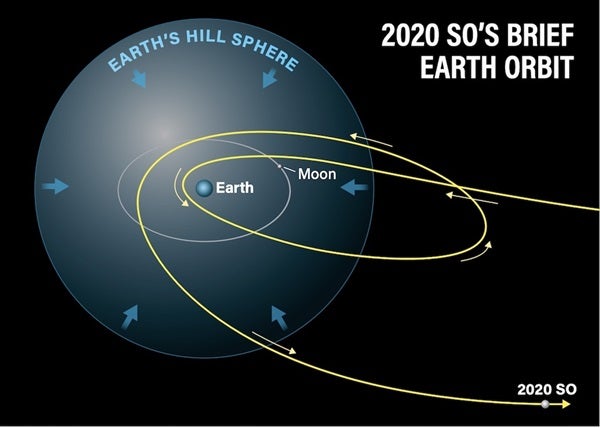A rocket booster that launched a 1966 NASA lunar probe was captured by Earth’s gravity in November 2019. It then escaped our gravity in March 2021. What gave it enough energy to escape?
The motion of the booster, named 2020 SO, is primarily driven by the gravity of the Sun and Earth. Prior to 2019, the booster was orbiting the Sun with an orbit similar to Earth’s, but moving at a slower velocity relative to our planet. So, when Earth “caught up” to 2020 SO, our planet’s gravity pulled the object inside Earth’s Hill sphere — the region around a celestial object where its gravitational attraction dominates all other sources of gravity. Thus, Earth temporarily captured the booster from the Sun.
The overall orbital energy in the Sun-Earth-object system remains constant over time, meaning that there was no extra energy imparted to the booster at any time before capture, during the temporary Earth-orbiting phase, or after escape back into solar orbit. But the energy level of the Sun-Earth-object system does determine the regions where a satellite moves. At a given position and at a low velocity, an object is bound to either a geocentric or heliocentric orbit. It does not have enough energy to transition between either orbit. For higher velocities at the same position, two gateways open where a heliocentric orbit intersects with the Earth’s Hill sphere. These specific points are known as the Lagrange L1 and L2 equilibrium points. At either gateway, a satellite orbiting the Sun could find itself briefly orbiting the Earth, and vice versa.
The orbital energy of 2020 SO was high enough for the booster to move from its heliocentric orbit through the L2 gateway into Earth’s Hill sphere in November 2020, when it was temporarily captured. Since the energy of the system is conserved, the other gateway remained open to the booster and 2020 SO escaped Earth’s Hill sphere through the L1 point in March 2021.










